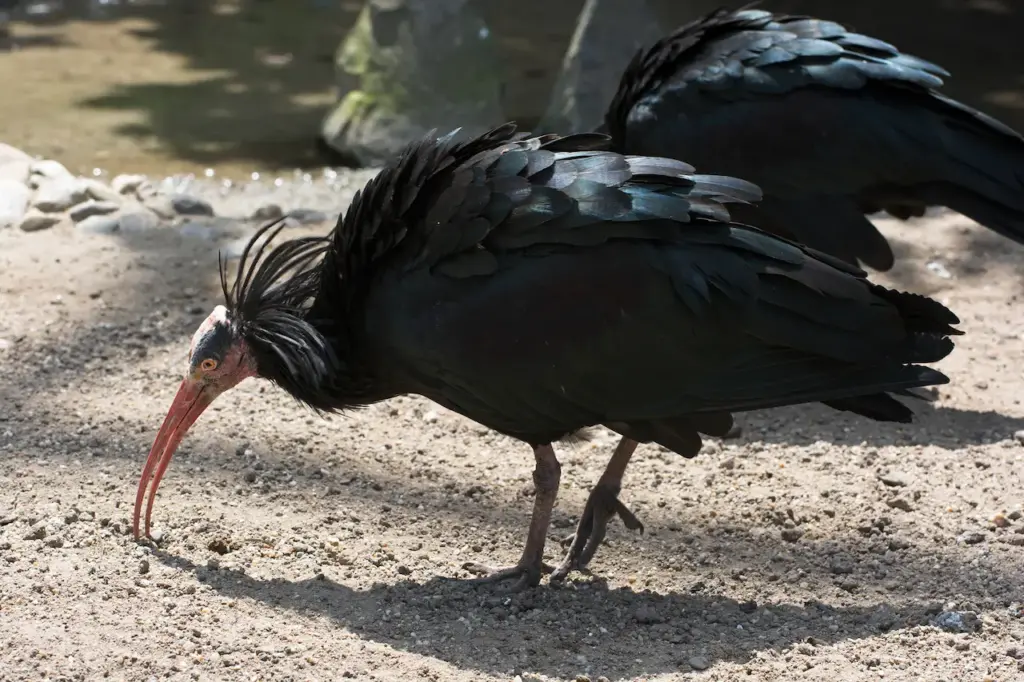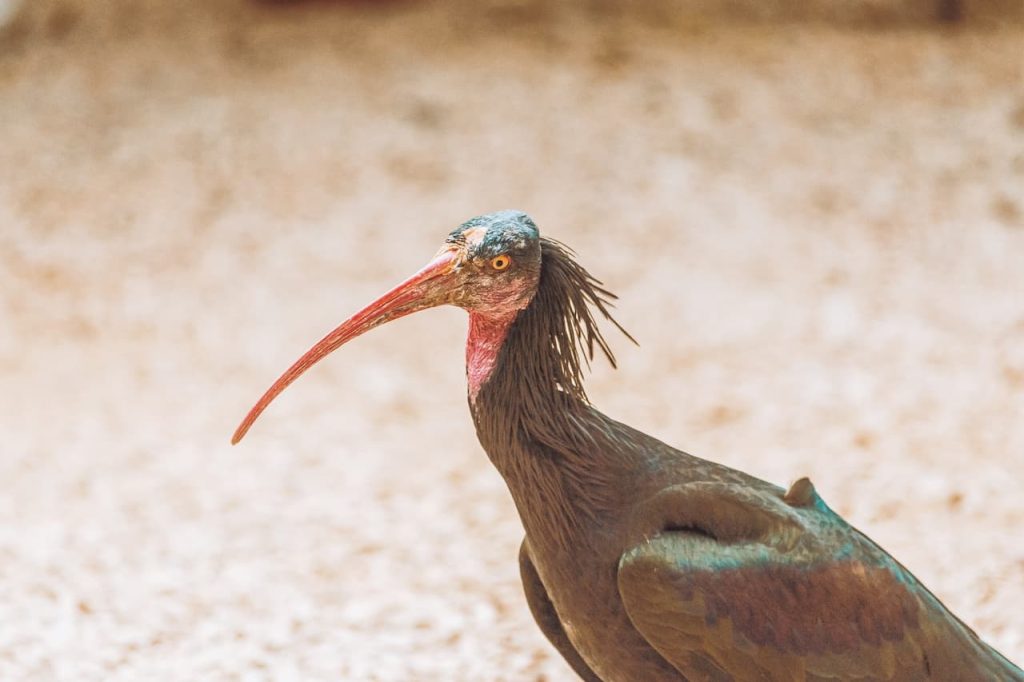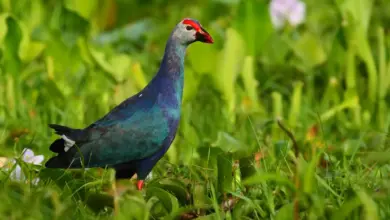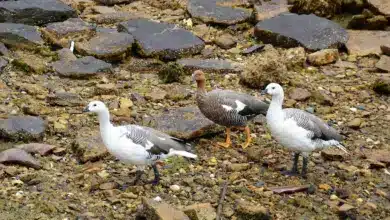Northern Bald Ibises, Hermit Ibises, or Waldrapps (Geronticus eremita)
Northern Bald Ibises, Hermit Ibises, or Waldrapps (Geronticus eremita)
The Northern Bald Ibises (Geronticus eremita) – also known as Hermit Ibis or Waldrapp – occurs naturally in Northern Morocco (North Africa), Syria, Jordan, Saudi Arabia, Ethiopia, Eritrea, Sudan and Turkey.
It became extinct in Europe over 300 years ago, and its numbers have been declining throughout its range due to hunting, habitat destruction and pesticide poisoning.

They commute in large flocks of up to 100 birds from their breeding sites to their winter roosts or feeding areas. They are usually seen flying in a V-formation.
Captive birds are kept in Europe, Japan and North America.
They inhabit barren, semi-desert or rocky habitats, often close to running water. However, unlike other ibises, the Northern Bald Ibis does not wade.
These gregarious, long-legged wading birds have long down-curved bills that facilitates foraging in the soil for their preferred food sources.
The Northern Bald Ibis can be differentiated from the closely related Southern Bald Ibis of Southern Africa by its whitish face.
Lifespan
The lifespan of a captive Northern Bald Ibis is an average of 20–25 years. The oldest recorded male lived to 37 years old and the oldest recorded female to 30 years.
In the wild, they are estimated to live 10 – 15 years.
The Northern Bald Ibis is a large, glossy black ibis that measures 70–80 cm (28–31 in) in length, with a 125–135 cm (49–53 in) wingspan, and an average weight of 1.0–1.3 kg (35–46 oz).
The plumage is mostly glossy black with a bronze-green and violet iridescence. It has a dull red head, whitish face, with white markings on the crown, and a long, curved red bill.
Males and females look alike, except males tend to be larger than females and have longer bills.
Juvenile Birds
The chicks have a pale brown down. The fledged juveniles look like adults, except the head is dark, the feet are light grey and the bill is pale-colored. The unfeathered head and neck turn red as they mature.

Similar Species:
The Northern Bald resembles the Glossy Ibis, except the Northern Bald is larger and stockier.
Breeding
The Northern Bald Ibises reach reproductive mature at age 3 – 5 and once they find their mate, they form life-long pair bonds.
They breed in loosely spaced colonies on the coast or near rivers.
The male chooses a nest site, prepares it and then advertises himself to available females by waving his crest and emitting low rumbling calls. In bonded pairs, their bond is reinforced through bowing displays and mutual preening.
Their shallow loosely-constructed, cup-shaped platforms of sticks and grasses are typically situated on cliffs or amongst boulders on steep slopes. The nest is usually re-used year after year.
The average nest consists of 2 – 4 oval eggs, which weigh about 50.16 f (1.8 oz) which are 0.93 cm long and 0.68 cm wide (2.37 × 1.73 in). Initially, these eggs are blue-white with brown spots, but they turn brownish during the incubation process.
The eggs are incubated for about 24 – 25 days to hatching. Both parents care for the chicks. The young fledge when they are about 40 – 50 days old. They usually take their first flight when they are about 2 months old.
Diet / Feeding
Northern Bald Ibises mostly feed in shallow waters on aquatic insects, mollusks, frogs, and food sifted from the water surface.
Their diet also includes insects (beetles) caught on land, as well as snails, scorpions, spiders, caterpillars, lizards, skinks, and other small reptiles.
Some species will also take small mammals and ground-breeding birds.
They use their long bills to feel for food items in the soil.
Ibis Information and Listing of Species … Ibis Species Photo Gallery




